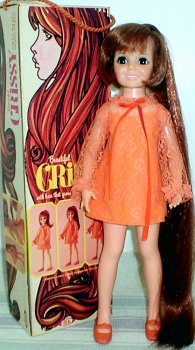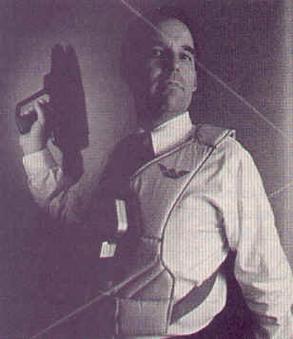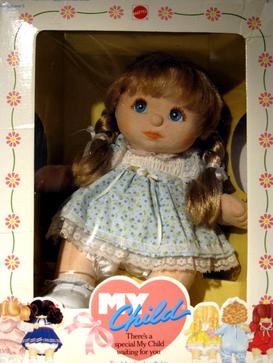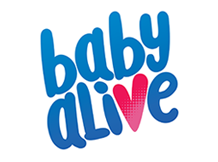Related Research Articles
Popples is a toy and television franchise created by Those Characters From Cleveland (TCFC), a subsidiary of American Greetings. Popples resemble brightly colored marsupial teddy bears with long tails ending in a pom-pom. Each Popple character transforms to resemble a brightly colored ball. In 2018, Popples was sold to Hasbro.
Rainbow Brite is a media franchise by Hallmark Cards, introduced in 1984. The animated Rainbow Brite television series first aired in 1984, the same year Hallmark licensed Rainbow Brite to Mattel for a range of dolls and other merchandise. A theatrical feature-length film, Rainbow Brite and the Star Stealer, was released by Warner Bros. in 1985. The franchise was rebooted in 2014 with a three part mini-series released on Hallmark's online streaming video service, Feeln. A line of new merchandise by Hallmark online and in its shops debuted in 2015.

Atomic Betty is a Canadian-French animated television series produced by Atomic Cartoons, Breakthrough Entertainment and Tele Images Kids, along with the Marathon Group joining for the third season. Additional funding for production is provided by Teletoon in Canada, Phil Roman Entertainment (uncredited) in the U.S. and M6 and Télétoon in France.

Teddy Ruxpin is an electronic children's toy in the form of a talking bear-like creature known as an 'Illiop'. The toy's mouth and eyes move while he tells stories about his adventures played on an audio tape cassette deck built into his back. While the character itself was created by Ken Forsse, the talking toy was designed and built by Forsse’s Alchemy II, Inc. employees, including Larry Larsen and John Davies. Later versions have a digital cartridge in place of a cassette.
Chatty Cathy was a pull-string "talking" doll originally created by Ruth and Elliot Handler and manufactured by the Mattel toy company from 1959 to 1965. The doll was first released in stores and appeared in television commercials beginning in 1960, with a suggested retail price of $18.00, though usually priced under $10.00 in catalog advertisements. Chatty Cathy was on the market for six years and was the second most popular doll of the 1960s after Barbie.
The Adventures of Teddy Ruxpin is a children's animated television series based on Teddy Ruxpin, an electronic children's toy created by Ken Forsse and distributed by toy manufacturer Worlds of Wonder (WoW9. Produced in 1986–7 for television syndication by DIC Enterprises with Atkinson Film-Arts, the series employed many of the same voice actors used in the book-and-tape series that was made for the eponymous animatronic toy. While some of the stories used in the TV series were adapted from the books, many were original and greatly expanded upon the world established there. The series differed from traditional children's animation at the time in that most of its 65 episodes were serialized rather than in traditional episodic form.

Crissy was an American fashion doll with a feature to adjust the length of its hair. Crissy was created in the Ideal Toy Corporation's prototype department in 1968.

What's Her Face! was a line of customizable dolls that straddled the line between traditional fashion dolls and creative activity toys. Made by Mattel, the line ran from 2001–2003, and enjoyed only a modest success in a market dominated by Mattel's iconic Barbie and MGA Entertainment's Bratz dolls. Following the discontinuation of the What's Her Face! line, their body molds were used for the Wee 3 Friends line of Barbie-related dolls. Several fashion, wig, and activity packs were also released for the What's Her Face line.

Worlds of Wonder (WoW) was an American toy company founded in 1985 by former Atari sales president Don Kingsborough, and former Atari employee Mark Robert Goldberg. Its founding was inspired by a prototype that became its launch product, Teddy Ruxpin. In 1986, it launched Lazer Tag and filed an IPO which Fortune magazine called "one of the year's most sought after stock sales". WoW partnered with the young Nintendo of America as retail sales distributor, crucial to the landmark launch and rise of the Nintendo Entertainment System from 1986 to 1987.
Littlest Pet Shop is a toy franchise and cartoon series owned by Hasbro and currently under license with Basic Fun!. The original toy series was produced by Kenner in the early 1990s. An animated television series was made in 1995 by Sunbow Productions and Jean Chalopin Creativite et Developpement, based on the franchise.
Diva Starz was a series of talking fashion dolls created and released by Mattel in October 2000. They are similar in design to MGA's Bratz and Tiger Electronics' Furby. Alexa, Nikki, Summer—later replaced by Miranda—and Tia were offered in the original debut. Originally produced as robotic dolls, Mattel would also release miniature and fashion doll versions in response to their initial success. The line was discontinued in 2004.

Lady Lovely Locks and the Pixietails is a character property created by American Greetings Corporation in the mid-1980s. The characters were licensed for a toyline by Mattel, and for a syndicated animated television series by DiC Animation City in 1987. Only 20 episodes were produced in all.

My Child dolls are a toy made by Mattel from 1985-1988. Most had felt "skin" on their heads although some had vinyl skin.
Rose Petal Place is an American-produced animated film from 1984 made by Ruby-Spears, with a corresponding line of flower-themed dolls made by Kenner Products. The concept for Rose Petal Place was created by David Kirschner and the film was written by Mal Marmorstein. The film was directed by Charles August Nichols, and was released in syndication in May 1984.

Baby Alive is a baby doll brand made by Hasbro that eats, drinks, wets and in some cases messes and has a movable mouth. It was originally made and introduced by Kenner in 1973, and reintroduced by Hasbro in 2006.

Hi-Tops Video was a children's home video sublabel of Media Home Entertainment, active from 1986 until 1991. Some of its releases include some Charlie Brown specials, Madeline and primarily some of the original Baby Songs video releases beginning in 1987.
Star Fairies was a doll toy series of the 1980s made by the Tonka company. The dolls had different costumes and personalities. Star Fairies was adapted into a televised special, made by Hanna-Barbera in 1985. Family Home Entertainment released the special on VHS in 1986.
The Barbie Basics is a line of collector's edition Barbie dolls. They were created by Mattel designer Bill Greening and were introduced in late 2009 to be officially released in the spring of 2010.

Monkgomery is a children's puppet. It takes the form of a talking monkey wearing a necktie, released by Hasbro in 1986. The toy is 17" in height and sits at approximately 14" tall. The toy has two Velcro strips on his hands allowing him to be hung from objects. The toy can also function as a cuddle buddy at night and a day time play toy. Additional speech modules provided 200 new words.
References
- ↑ Ward, Arthur (2020). Action Figures: From Action Man to Zelda. Crowood. ISBN 9781785006883.
- ↑ US4923428A,Curran, Kenneth J.,"Interactive talking toy",issued 1990-05-08